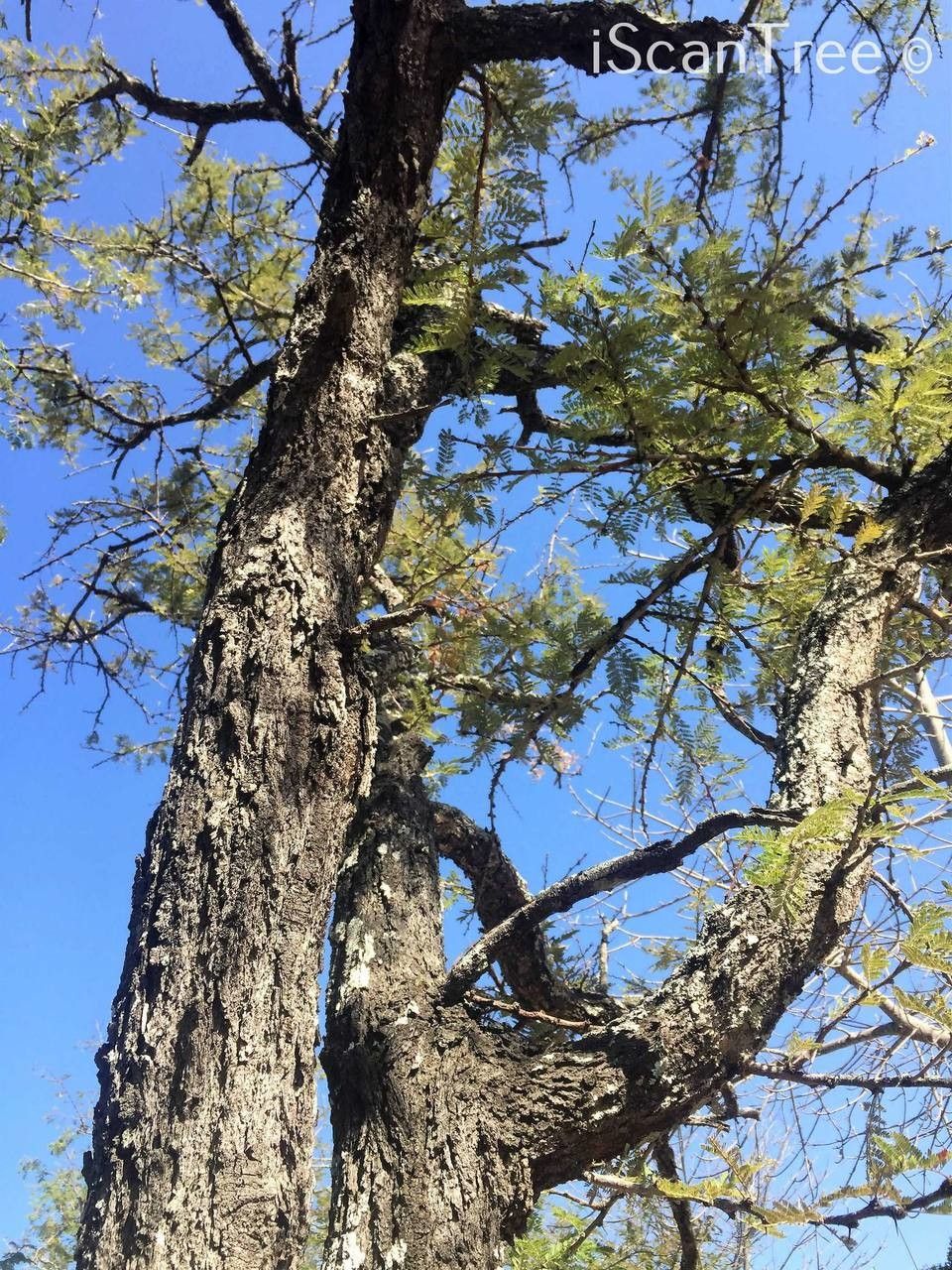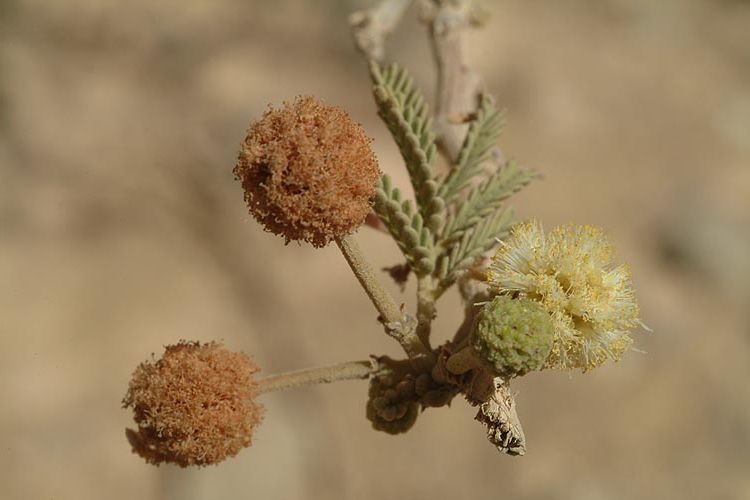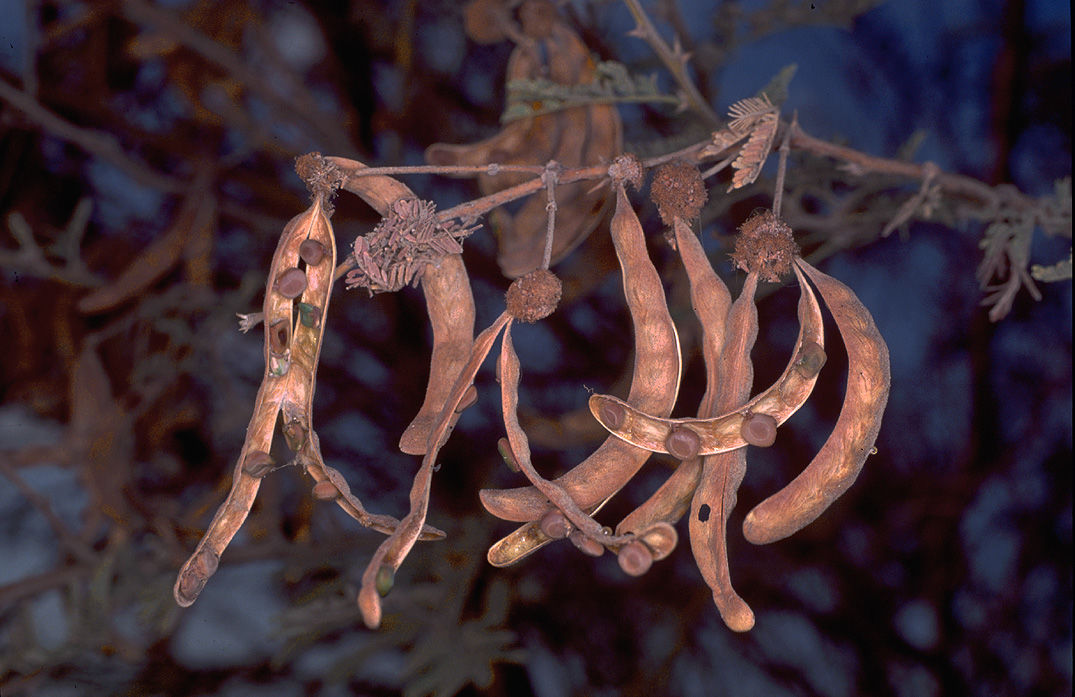Gerrard's Acacia
vachellia gerrardii
Also known as: ["Gerrard's Thorn","Gerrard's Thorn Tree"]
Overview
A deciduous thorn tree native to southern Africa, known for its drought tolerance and distinctive bipinnate leaves.
Benefits & Perks
["drought tolerant","wildlife attractant (bees, butterflies, birds)","shade tolerant"]
Botanical Classification
| Phylum: | Magnoliophyta |
| Class: | Magnoliopsida |
| Order: | Fabales |
| Family: | Fabaceae |
| Genus: | Vachellia |
| Botanical Name: | Vachellia gerrardii |
Plant Characteristics
Basic Information
- Category: Trees
- Suitable Location: outdoor garden in arid or semi-arid regions
- Suitable For:
- Is Weed: No
- Allergenicity: low
Environmental Needs
- Climate: {"temperatureRange":"5–40°C"}
- Hardiness: {"zones":"8–11"}
- Misting: rarely required
- Drainage: Fast-draining to prevent waterlogging.
- Soil Type: Well-draining, sandy or loamy soil with some organic matter; cactus or succulent potting mix is ideal.
Maintenance Level
- Maintenance Level: moderate
- Toughness Level: high
- Pruning Frequency: Annually in late winter or early spring before new growth begins; light pruning can be done as needed.
- Pruning Intensity: Moderate; remove up to one-third of old growth if necessary to rejuvenate the plant.
Care Details
Ideal Sunlight Coverage:
Full sun (6–8 hours of direct sunlight daily); tolerates partial shade but may become leggy with insufficient light.
Sunlight Tolerance Tips:
Acclimate gradually if moving from shade to full sun; protect from intense midday sun in hot climates; ensure good air circulation to prevent fungal issues.
Care Requirements
Care Difficulty
moderatemoderate
Sunlight
full sun
Rotate plant for even growth; use sheer curtains to filter harsh sunlight; place near south-facing window for optimal light.
Watering
every 4–6 weeks during active growth, less in winter
Water thoroughly but infrequently; ensure soil dries out between waterings; avoid overwatering to prevent root rot.
Soil
well-drained, sandy or loamy soil
pH: Slightly acidic to neutral (pH 6.0–7.0).
Ensure pots have drainage holes; avoid heavy clay soils; use a mix that dries out between waterings.
Temperature
Prefers warm temperatures (65–85°F / 18–29°C); can tolerate brief dips to 20°F (-6°C) but thrives in mild conditions.
Avoid placing near drafty windows or heating vents; maintain consistent temperatures; protect from sudden temperature fluctuations.
Fertilizing
every 3 months with slow-release fertilizer during active growth
Fertilize only during active growth; avoid over-fertilization to prevent salt buildup; flush soil occasionally to remove excess salts.
Propagation
Methods
Stem cuttings or seed; stem cuttings are more common for home growers.
Step-by-Step Propagation Guide
- Take a 4–6 inch cutting.
- Remove lower leaves.
- Apply rooting hormone.
- Plant in moist medium.
- Maintain humidity.
Best Time: Spring or early summer when the plant is actively growing.
Environment
Warm (70–80°F / 21–27°C), humid, and bright but indirect light; protect from direct sun.
Medium
Well-draining mix of perlite and coarse sand or cactus potting mix.
Hormone
Rooting hormone is recommended to improve success rates.
Timeline
Roots may develop in 4–8 weeks; establishment can take several months.
Tools Needed
Pruning shears, rooting hormone, small pots, well-draining medium, plastic wrap or propagator.
Quick Tips
Use healthy, non-flowering stems; keep medium consistently moist but not waterlogged; provide bottom heat if possible.
Pruning & Repotting
Pruning Guide
Method
Use clean, sharp tools; make cuts just above a leaf node or branch junction; remove crossing or inward-growing branches.
Pruning Plan
Prune to maintain shape, encourage bushiness, and remove dead or diseased wood; also to control size in containers.
Tools
Pruning shears, loppers (for larger branches), sterilizing solution (e.g., rubbing alcohol).
Checklist
Sterilize tools; prune during dormancy; remove dead/diseased wood; shape the plant; clean up debris.
Repotting Guide
Best Season
Early spring before the growing season begins.
Pot Size
Increase pot size by 2–3 inches in diameter; ensure the new pot has drainage holes.
Method
Remove plant gently; trim any circling roots; place in a slightly larger pot with fresh, well-draining soil; water thoroughly after repotting.
Suggestions
Repot every 2–3 years or when roots fill the container; necessary to refresh soil and provide space for growth.
Checklist
Choose appropriate pot size; prepare fresh soil mix; handle roots carefully; water after repotting; place in appropriate light.
Advanced Care Tips
Watering Mastery
Watering Checklist
Check soil moisture before watering; water deeply; ensure drainage; avoid wetting foliage.
How to Apply Water Properly
Water directly at the root zone until water drains from the bottom; ensure even moisture penetration but avoid waterlogging; water in the morning to allow foliage to dry.
Watering Schedule Tips
Water deeply once every 7–14 days during active growth in spring and summer; reduce frequency to once a month or less in fall and winter, allowing soil to dry completely between waterings.
Soil Improvement
Add perlite, coarse sand, or pumice to improve drainage; incorporate compost for organic matter.
Temperature Stress Management
Signs of Temperature Issues
Chlorosis or leaf drop in extreme cold; wilting or scorching in excessive heat.
Cold Stress
Growth slows or halts; may experience leaf drop or dieback if temperatures drop below tolerance range.
Solution: Move to a sheltered location; apply a thick layer of mulch; protect from frost with a frost cloth.
Hot Stress
Wilting, leaf scorch, or reduced flowering due to excessive heat and dry conditions.
Solution: Provide shade during peak heat; increase watering frequency; use mulch to retain soil moisture.
Fertilizing Guide
Fertilizing Checklist
Use diluted fertilizer; apply during growing season; avoid contact with roots; flush soil periodically.
Fertilizing Method
Use a balanced, low-nitrogen fertilizer diluted to half strength every 4–6 weeks during spring and summer; avoid fertilizing in fall and winter.
Common Problems & Solutions
Toxicity Warning
Cats
Non-toxicVachellia gerrardii is not considered toxic to cats. The plant does not pose a risk of poisoning to felines through ingestion or contact.
⚡ Toxic If:
None
Dogs
Non-toxicVachellia gerrardii is not considered toxic to dogs. There are no documented cases of toxicity in canines from exposure to this plant.
⚡ Toxic If:
None
Humans
Non-toxicVachellia gerrardii is not considered toxic to humans under normal circumstances. The plant does not produce any known toxic compounds that would cause adverse effects upon ingestion or contact.
⚡ Toxic If:
None
Frequently Asked Questions
Q: Is Vachellia gerrardii suitable for arid climates?
A: Yes, it is highly drought-tolerant and thrives in arid and semi-arid regions.
Q: Does this plant attract wildlife?
A: Yes, it attracts bees, butterflies, and birds due to its flowers and foliage.
Q: How tall does Vachellia gerrardii grow?
A: It typically reaches heights of 4–8 meters, with a spreading canopy.
Quick Reference
| Family: | Fabaceae |
| Care: | moderate |
| Light: | full sun |
| Water: | every 4–6 weeks during activ |
Get Expert Care Tips
Download the Plantious app for personalized care reminders and plant identification!
Google Play App Store








